Data Center Cooling: The Shift from Airflow to Liquid Immersion
5 February 2025
In an era where tech advancements are blazing forward at lightning speed, data centers have become the backbone of our digital lives. Whether it's streaming your favorite shows, cloud computing, or even crunching massive datasets for AI, these facilities are working 24/7 to keep everything running smoothly. But there's a catch. As data centers grow in size and power consumption, so does the heat they generate. And let's face it—if you're running the tech equivalent of a marathon, you're going to sweat!
For years, data centers have relied on traditional airflow-based cooling systems to keep their servers from melting down. But now, as these centers continue to expand and demand more energy, we're seeing a fascinating shift in the industry. We're talking about liquid immersion cooling—the next big thing in data center cooling tech. So, what's this all about? Why are we moving from air to liquid, and how does it all work? Let’s dive in.
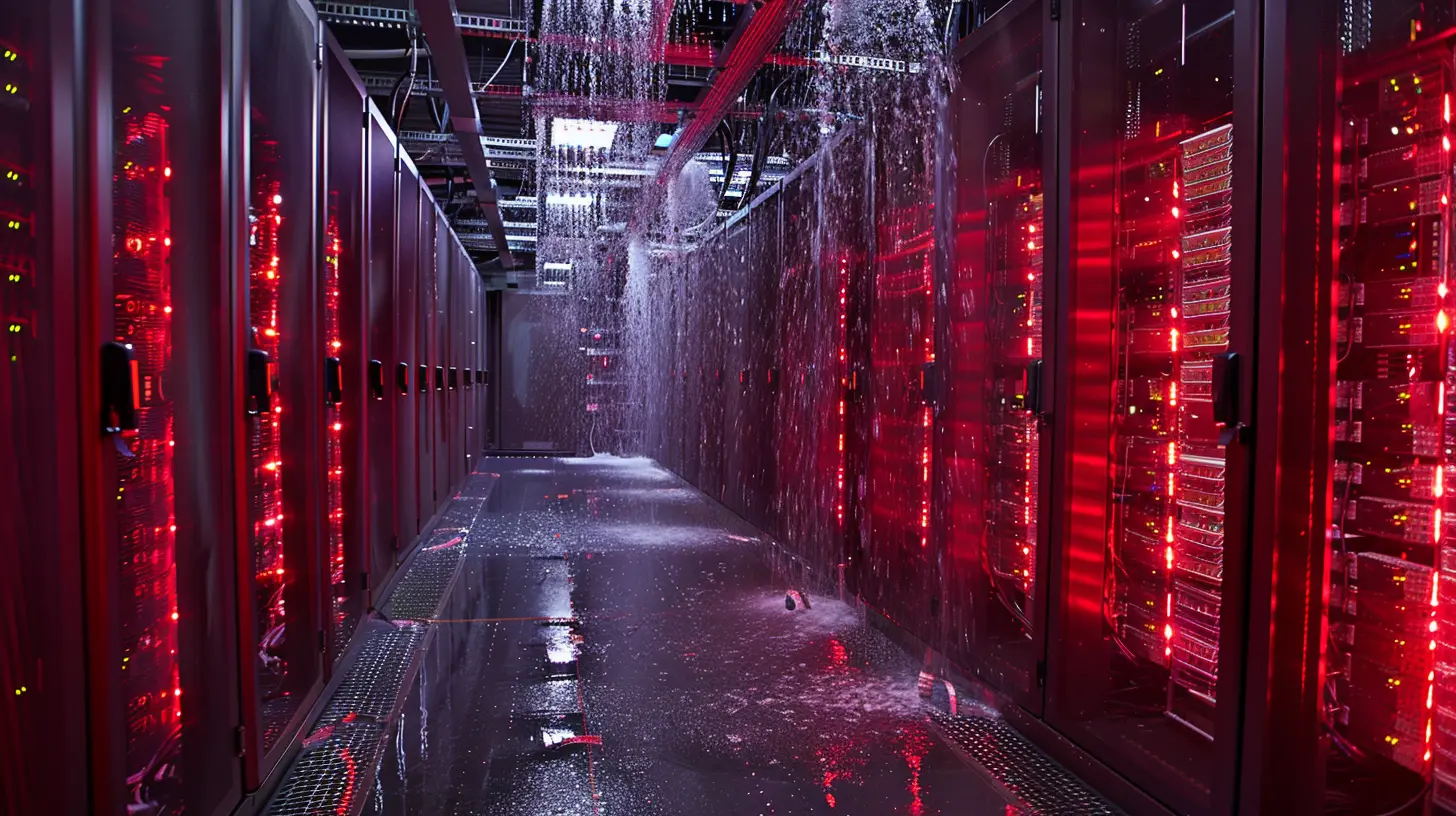
The Heat Problem in Data Centers
Let’s start with the basics. Why do data centers need cooling in the first place?Well, just like your laptop or smartphone heats up when you're binge-watching Netflix or running a demanding app, the servers that power the internet heat up too—only on a much larger scale. We're not talking about a little warmth here. These machines generate serious heat. If left unchecked, this heat can cause servers to overheat, malfunction, or even shut down, resulting in costly downtime and potential data loss. Imagine the chaos if your favorite streaming service went down because the servers were too hot!
To prevent this, cooling is essential. But as data centers ramp up their performance, traditional cooling methods—mainly air-based systems—are starting to fall short. Enter liquid immersion cooling.
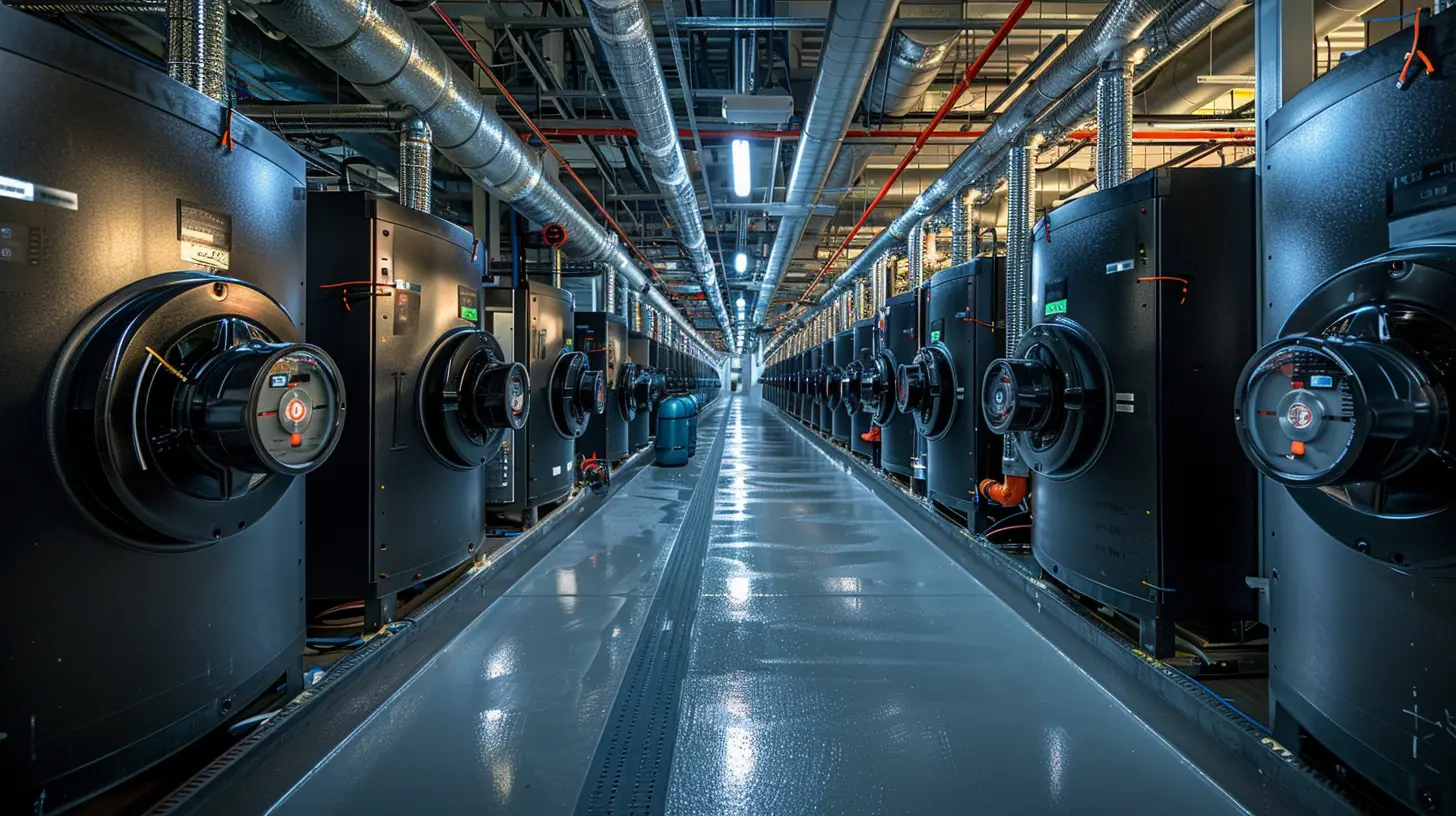
Traditional Airflow Cooling: The Old Guard
For decades, airflow-based cooling has been the go-to method for data centers. It’s pretty straightforward: cool air is pumped through the data center, absorbing the heat from the servers, and then vented out. Think of it like using a fan to cool yourself on a hot day. Simple, right?Here’s how it typically works:
- Chilled Air: Air conditioning systems or Computer Room Air Conditioners (CRACs) pump cold air into the server rooms.
- Hot Aisle/Cold Aisle: Data centers often use a technique called "hot aisle/cold aisle" configuration. Cold air is pushed through the front of the servers, absorbs the heat, and then is expelled through the back into a "hot aisle." This hot air is then vented or recirculated for cooling.
- Heat Exchangers: Heat exchangers are sometimes used to improve efficiency, transferring the heat from the air into water, which is then pumped away to dissipate the heat.
While this method works, it’s not without its problems. Air is a relatively inefficient medium for transferring heat compared to liquids. Plus, the bigger the data center, the more energy is required to keep it cool. We're talking about a huge chunk of the total energy used by data centers being dedicated solely to cooling.
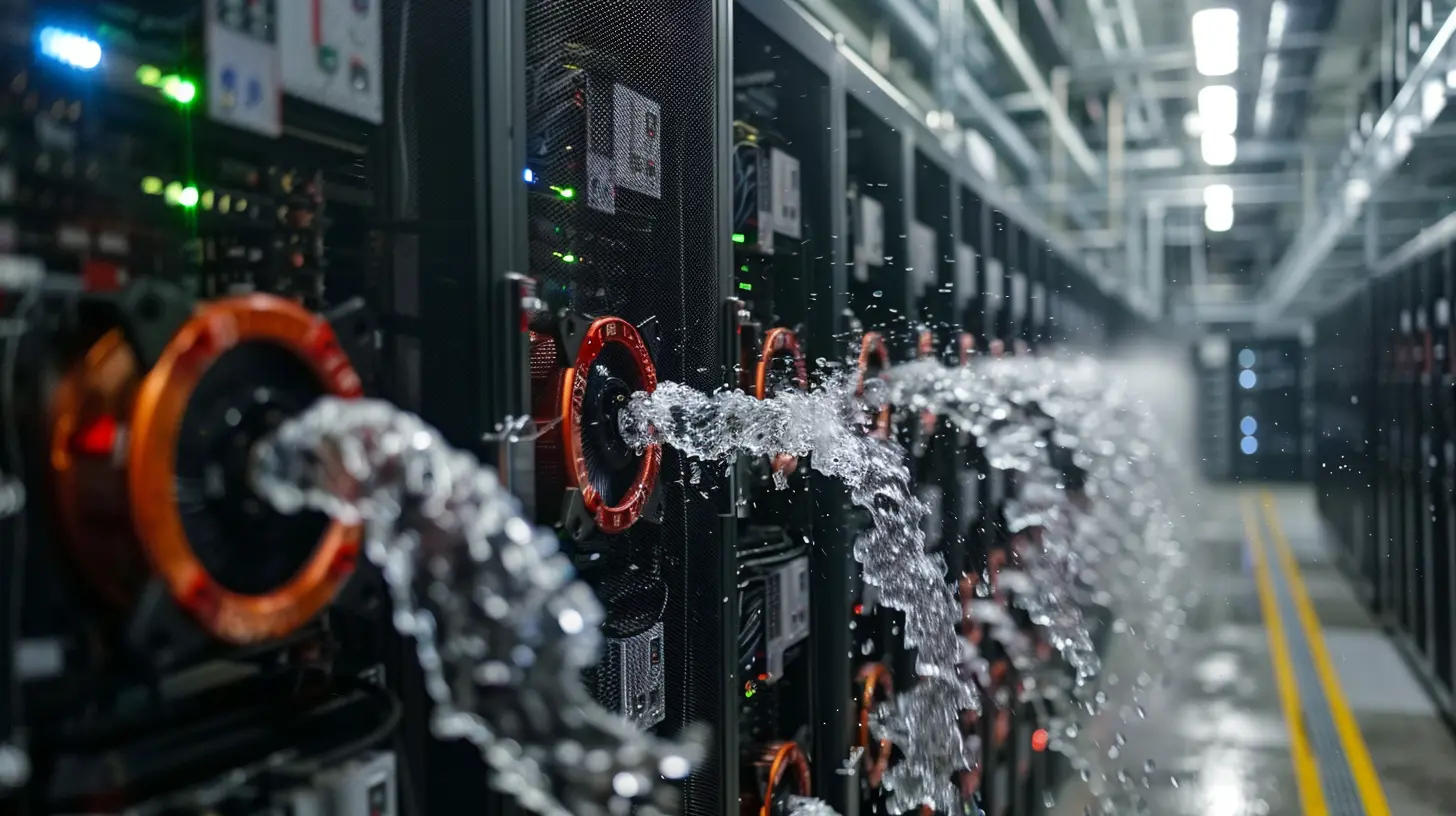
Enter Liquid Immersion Cooling: The New Kid on the Block
So, what's the alternative? Liquid immersion cooling is an innovative method that’s rapidly gaining traction among data center operators. Instead of relying on air, this technique involves submerging the servers directly into a specialized, non-conductive liquid. Yes, you read that right—servers actually bathe in liquid!How Does Liquid Immersion Cooling Work?
The concept might sound futuristic, but it’s quite simple once you break it down:1. Non-Conductive Liquid: The servers are submerged in a liquid that doesn’t conduct electricity (unlike water). This ensures that the electronic components are safe while being cooled.
2. Heat Absorption: As the servers heat up, the liquid absorbs the heat far more efficiently than air ever could.
3. Heat Extraction: The heated liquid is then pumped away, where the heat can be dissipated using heat exchangers or cooling towers. The cooled liquid is recirculated back into the system.
In essence, it’s like giving your servers a spa day, where they can relax and cool down in a liquid bath designed to whisk away the heat.
Types of Liquid Immersion Cooling
There are two primary types of liquid immersion cooling:1. Single-Phase Immersion Cooling
In single-phase immersion cooling, servers are submerged in a bath of dielectric fluid. The fluid absorbs the heat generated by the servers, but unlike air, it doesn’t evaporate. Instead, it just gets warmed up and is then pumped away to a heat exchanger to cool down. After that, the cooled fluid is recirculated back into the system.2. Two-Phase Immersion Cooling
Two-phase immersion cooling is a bit more complex. In this method, the liquid actually vaporizes when it absorbs the heat from the servers. The vapor then rises, cools down (typically via a condenser), and condenses back into a liquid, where it can be recirculated. This method is even more efficient at removing heat but requires more sophisticated equipment.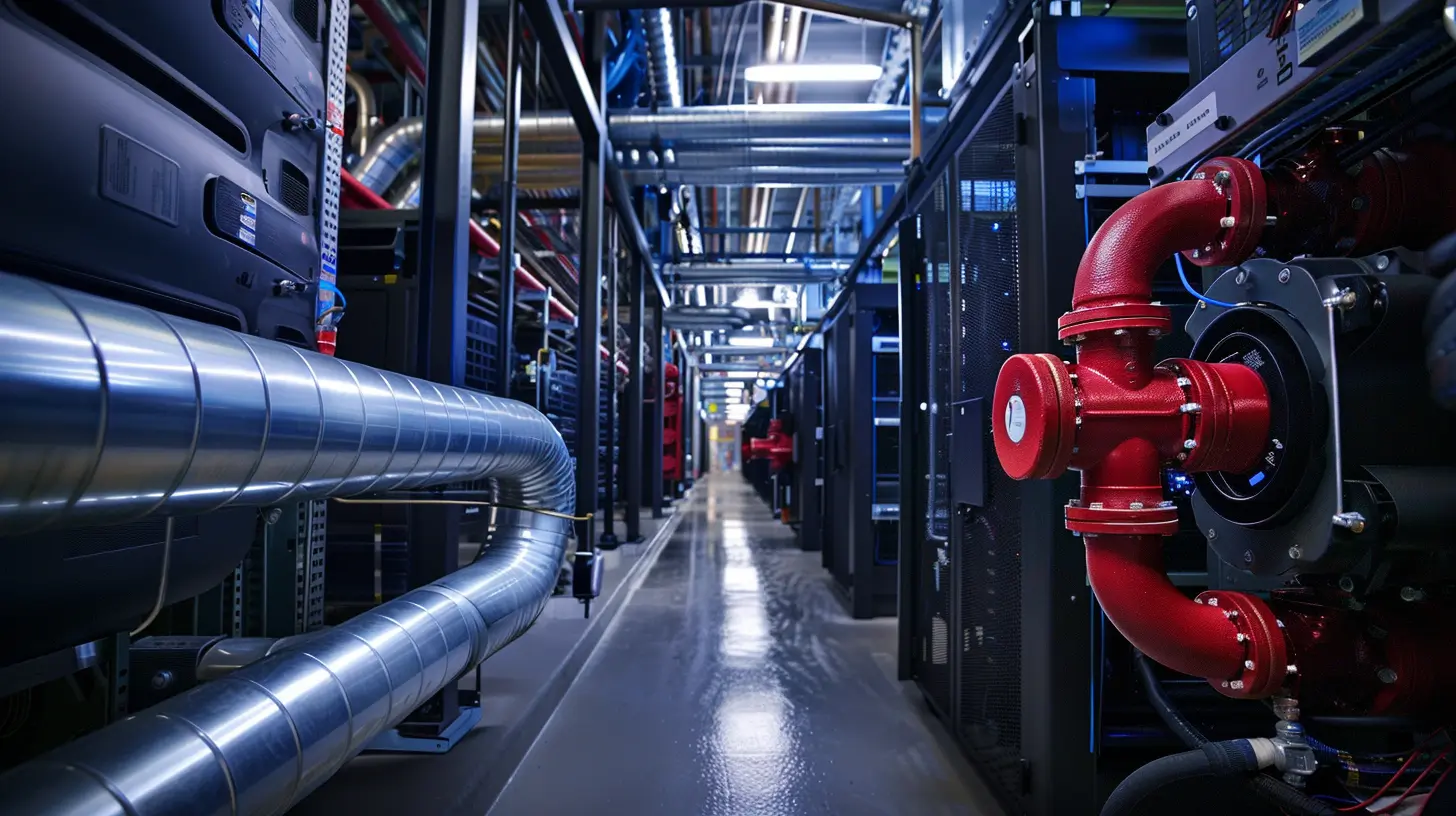
Why Liquid Immersion Cooling is Gaining Steam (Pun Intended)
Now that we know how it works, let’s explore why many experts believe liquid immersion cooling is the future of data center cooling.1. Better Efficiency and Heat Transfer
Liquids are much more efficient at transferring heat than air. In fact, liquids can remove heat around 1,000 times more effectively than air. This means that using liquid immersion cooling allows data centers to cool their servers more quickly and with less energy. The result? Improved cooling performance and lower operational costs.2. Energy Savings
One of the biggest advantages of liquid immersion cooling is the reduction in energy consumption. Traditional air-based cooling systems gobble up a lot of power—up to 40% of a data center’s total energy use. Liquid cooling, on the other hand, can reduce energy consumption by as much as 90%. That’s a massive difference!In an age where energy efficiency and sustainability are becoming key priorities, this kind of energy saving is a game-changer. Plus, with less reliance on HVAC systems and fans, liquid immersion cooling also reduces the carbon footprint of data centers.
3. Smaller Footprint
Because liquid immersion cooling is so much more efficient, it allows data centers to pack more servers into smaller spaces. Without the need for extensive airflow management systems (like those hot aisle/cold aisle setups), data centers using liquid cooling can be more compact. This is especially important in urban environments where real estate is at a premium.4. Reduced Maintenance and Longer Lifespan for Equipment
Another benefit of liquid immersion cooling is that it can actually extend the lifespan of your servers. With traditional air cooling, dust and debris can accumulate in the servers, leading to wear and tear over time. But when your servers are submerged in liquid, there’s no dust to worry about. Plus, the consistent cooling helps prevent overheating and thermal stress, which can degrade components.Less wear and tear means fewer maintenance headaches and longer-lasting equipment. That’s a win-win for data center operators.
5. Quieter Operations
Traditional air-cooled data centers are noisy. All those fans and blowers generate a significant amount of noise. Liquid immersion cooling, on the other hand, operates much more quietly since it doesn’t require as many fans or mechanical components. This makes for a quieter working environment, which is always a plus for on-site technicians and engineers.Challenges and Considerations
As exciting as liquid immersion cooling is, it’s not without its challenges.1. Initial Costs
One of the main barriers to widespread adoption is the upfront cost. Installing a liquid immersion cooling system requires specialized infrastructure, which can be more expensive than traditional air-based systems. However, it’s worth noting that the long-term savings in energy and maintenance costs often outweigh the initial investment.2. Specialized Equipment
Not all servers are designed to be submerged in liquid. Data center operators need to use specialized hardware that’s built for immersion cooling. This can limit the flexibility of upgrading or mixing and matching different types of equipment.3. Training and Expertise
Liquid immersion cooling systems require a different skill set than traditional air-cooled systems. Technicians and engineers need to be trained in how to operate and maintain these systems, which can be a learning curve for some organizations.
The Future of Data Center Cooling
So, where do we go from here? As data centers continue to grow in size and complexity, the need for more efficient cooling solutions will only increase. Liquid immersion cooling is certainly a strong contender to become the gold standard for cooling in the future.With its energy savings, efficient heat transfer, and reduced environmental impact, it’s easy to see why more and more companies are exploring this technology. While there are still hurdles to overcome—such as initial costs and specialized hardware—it’s clear that the shift from airflow to liquid immersion is already underway.
In the coming years, we can expect to see more data centers adopt this cutting-edge cooling method, helping to pave the way for a more sustainable and efficient digital infrastructure.
Conclusion
As technology continues to evolve, so too must the way we manage the infrastructure that supports it. Data centers are the heart of our digital world, and keeping them cool is essential for their performance and longevity. While traditional airflow cooling has served us well, it’s becoming clear that liquid immersion cooling offers a more efficient, cost-effective, and sustainable solution for the future.The shift from airflow to liquid immersion cooling isn’t just a trend—it’s a necessary evolution for data centers to keep up with the increasing demands of today’s tech-driven world. So, the next time you stream a movie or upload a file to the cloud, just remember: somewhere, a server might be chilling out in a liquid bath, ensuring your data is safe and sound.
all images in this post were generated using AI tools
Category:
Data CentersAuthor:

Gabriel Sullivan
Discussion
rate this article
21 comments
Cooper Gonzalez
Excellent insights on the evolving landscape of data center cooling! The transition from airflow to liquid immersion highlights innovative approaches to efficiency and sustainability. Looking forward to more advancements in this area!
March 24, 2025 at 8:57 PM

Gabriel Sullivan
Thank you for your positive feedback! I’m excited about the potential of liquid immersion cooling and its impact on efficiency and sustainability in data centers. Stay tuned for more developments!
Max Newman
This article astutely highlights the evolution of data center cooling strategies, emphasizing liquid immersion's efficiency and sustainability advantages over traditional airflow methods. Insightful read!
March 15, 2025 at 12:29 PM

Gabriel Sullivan
Thank you for your thoughtful feedback! I'm glad you found the insights on liquid immersion's benefits valuable.
Elle Riggs
Great insights! Embracing liquid immersion could revolutionize energy efficiency in data centers.
March 10, 2025 at 7:15 PM

Gabriel Sullivan
Thank you! I'm glad you found the insights valuable. Liquid immersion certainly has the potential to transform energy efficiency in data centers.
Gavin Fletcher
“Airflow is so last season! Liquid immersion is the cool kid on the block—literally redefining how we keep tech chill.”
March 5, 2025 at 7:26 PM

Gabriel Sullivan
Thanks for your insights! Liquid immersion is indeed a game-changer, offering efficiency and sustainability benefits that traditional airflow cooling can't match.
Rhett McAdams
Who knew data centers could take a dip? Liquid immersion sounds like a spa day for servers! Just remember, no rubber ducks allowed in the cooling pool—those data packets might get soggy!
March 5, 2025 at 1:27 PM

Gabriel Sullivan
Thanks for the clever comment! Liquid immersion truly is a game changer for cooling, but we'll keep the rubber ducks out!
Zaylee Barker
Embracing liquid immersion cooling marks a pivotal shift in tech evolution! This innovative approach not only enhances efficiency but also showcases our commitment to sustainability. As we navigate the future of data centers, let's champion these advancements that empower technology to thrive while minimizing environmental impact. The future is bright!
March 2, 2025 at 3:19 AM

Gabriel Sullivan
Thank you for your insights! Liquid immersion cooling truly represents a transformative step in data center technology, balancing efficiency with sustainability. Exciting times ahead!
Denise Nelson
This article beautifully highlights the evolution of data center cooling techniques. The shift to liquid immersion not only boosts efficiency but also reflects our commitment to sustainability. Exciting times ahead for tech innovation and environmental stewardship! Thank you for sharing!
March 1, 2025 at 4:22 AM

Gabriel Sullivan
Thank you for your insightful comment! I’m glad you found the article highlights the important advancements in cooling techniques and their positive impact on sustainability. Exciting times indeed!
Lyra Burton
Fascinating shift! Liquid immersion cooling seems like a game-changer for data centers. I'm curious about its long-term impacts on efficiency and sustainability. Will this method redefine our approach to heat management in tech infrastructure?
February 28, 2025 at 1:39 PM

Gabriel Sullivan
Thank you! Liquid immersion cooling does have the potential to significantly enhance efficiency and sustainability in data centers. Its ability to manage heat effectively could indeed redefine our approaches to thermal management in tech infrastructure.
Eva Wilcox
In liquid’s embrace, whispers of efficiency bloom, Cooling the hum of servers, crafting a tech-savvy room— Innovation flows, and progress consumes.
February 27, 2025 at 7:59 PM

Gabriel Sullivan
Thank you for your poetic insight! Liquid immersion indeed represents a transformative leap in data center efficiency and sustainability.
Thaddeus Hines
Insightful article! Liquid immersion cooling represents a significant advancement in efficient data center management.
February 27, 2025 at 11:15 AM

Gabriel Sullivan
Thank you! I'm glad you found the article insightful. Liquid immersion cooling truly is a game changer for data center efficiency.
Yolanda Rios
Liquid immersion is the future.
February 26, 2025 at 9:46 PM

Gabriel Sullivan
Thank you! Liquid immersion offers significant efficiency and cooling advantages, making it a promising solution for the future of data centers.
Hailey McNaughton
Liquid immersion cooling represents a pivotal shift in data center efficiency, drastically improving thermal management and energy consumption. This innovative approach not only enhances performance but also supports sustainability goals, making it essential for the future of computing infrastructure.
February 26, 2025 at 3:25 AM

Gabriel Sullivan
Thank you for your insightful comment! Liquid immersion cooling indeed marks a transformative step in enhancing data center efficiency and sustainability.
Mira Matthews
Who knew water could be the coolest tech trend? Dive into liquid immersion—because keeping data chill has never looked so refreshing!
February 25, 2025 at 5:49 AM

Gabriel Sullivan
Thanks for your comment! Liquid immersion is indeed a game-changer in data center cooling—efficient and cutting-edge!
Adria Cantu
Great article! It's exciting to see the shift to liquid immersion cooling in data centers. This innovative approach not only enhances efficiency but also supports sustainability in tech. Keep up the great work!
February 24, 2025 at 1:48 PM

Gabriel Sullivan
Thank you for your kind words! I'm glad you found the article insightful. Liquid immersion cooling truly has the potential to revolutionize data center efficiency and sustainability!
Maggie Diaz
This article effectively highlights the evolving landscape of data center cooling, emphasizing the benefits of liquid immersion over traditional airflow methods. While liquid cooling offers superior efficiency and reduced energy consumption, it's crucial to consider implementation challenges and costs. A balanced approach will ensure optimal performance and sustainability in data centers.
February 24, 2025 at 5:03 AM

Gabriel Sullivan
Thank you for your insightful comment! I agree that while liquid immersion cooling presents significant advantages, addressing implementation challenges is essential for maximizing its benefits in data centers.
Kendra Bailey
Liquid immersion cooling offers a promising solution for data centers, enhancing efficiency and reducing energy costs compared to traditional airflow methods.
February 21, 2025 at 4:38 AM

Gabriel Sullivan
Thank you! Liquid immersion cooling indeed presents a significant advancement in data center efficiency and energy savings, marking a crucial shift in our cooling strategies.
Georgina McTiernan
Efficient cooling revolutionizes data centers.
February 11, 2025 at 5:50 AM

Gabriel Sullivan
Absolutely! Efficient cooling is essential for maximizing performance and sustainability in data centers, and liquid immersion technology is a game-changer in that shift.
Jenna Stone
Liquid immersion cooling represents a transformative leap in data center efficiency. By prioritizing liquid cooling over traditional airflow methods, we enhance thermal management, reduce energy consumption, and pave the way for a more sustainable future in technology. It's time to embrace this revolutionary approach for optimal performance.
February 7, 2025 at 7:45 PM

Gabriel Sullivan
Thank you for your insightful comment! Liquid immersion cooling indeed offers significant advantages in efficiency and sustainability, marking a pivotal shift in data center technology. Embracing this approach is crucial for optimizing performance and energy use.
Justice McQuillan
This article highlights a crucial evolution in data center cooling technology. The transition from airflow to liquid immersion cooling not only enhances energy efficiency but also improves heat management. It's exciting to see how innovative solutions are paving the way for sustainable data centers.
February 5, 2025 at 8:40 PM

Gabriel Sullivan
Thank you for your feedback! I’m glad you found the article informative and relevant to the advancements in data center cooling technology.
Bailey Mendoza
Cooling data centers with liquid immersion? Finally, a way to chill out without needing a Netflix binge! Let’s hope it doesn’t turn into a splash zone!
February 5, 2025 at 1:55 PM

Gabriel Sullivan
Glad you enjoyed it! Liquid immersion indeed offers a refreshing approach to cooling—let's hope it keeps things cool and not too splashy!
Cassidy Barlow
Embracing liquid immersion cooling is a game-changer for data centers, unlocking unparalleled efficiency and sustainability. It's time to innovate and redefine our tech ecosystems!
February 5, 2025 at 4:38 AM

Gabriel Sullivan
Absolutely! Liquid immersion cooling revolutionizes efficiency and sustainability in data centers, paving the way for a more innovative future. Exciting times ahead!
MORE POSTS

The Role of Data Lakes in Modern Data Analytics

Why Zero-Trust Security is the Future of Online Protection

The Future of eSIMs: Simplifying Connectivity Everywhere

Amazon Echo vs. Google Nest: Best Smart Speaker for Your Home

The Intersection of AI and Ethics: Navigating the Complexities
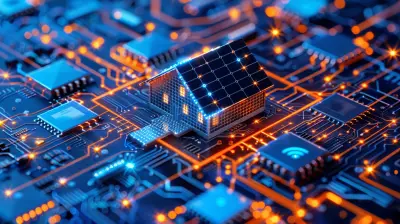
How Smart Homes Will Evolve with AI Integration

Acer Predator vs. MSI: Best Gaming Laptop for Performance

How to Set Up a Secure VPN for Remote Workers

Xbox Series X vs. PlayStation 5: Which Console Should You Buy?

How to Build the Perfect Portable Office Setup

Practical Uses of AR Glasses in Everyday Life
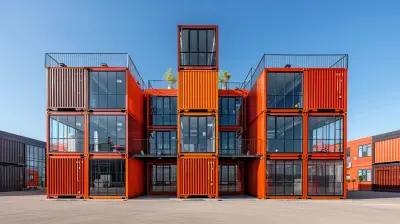
Exploring the Role of Containers in Modern Data Center Architectures

The Best Wi-Fi Extenders to Eliminate Dead Zones